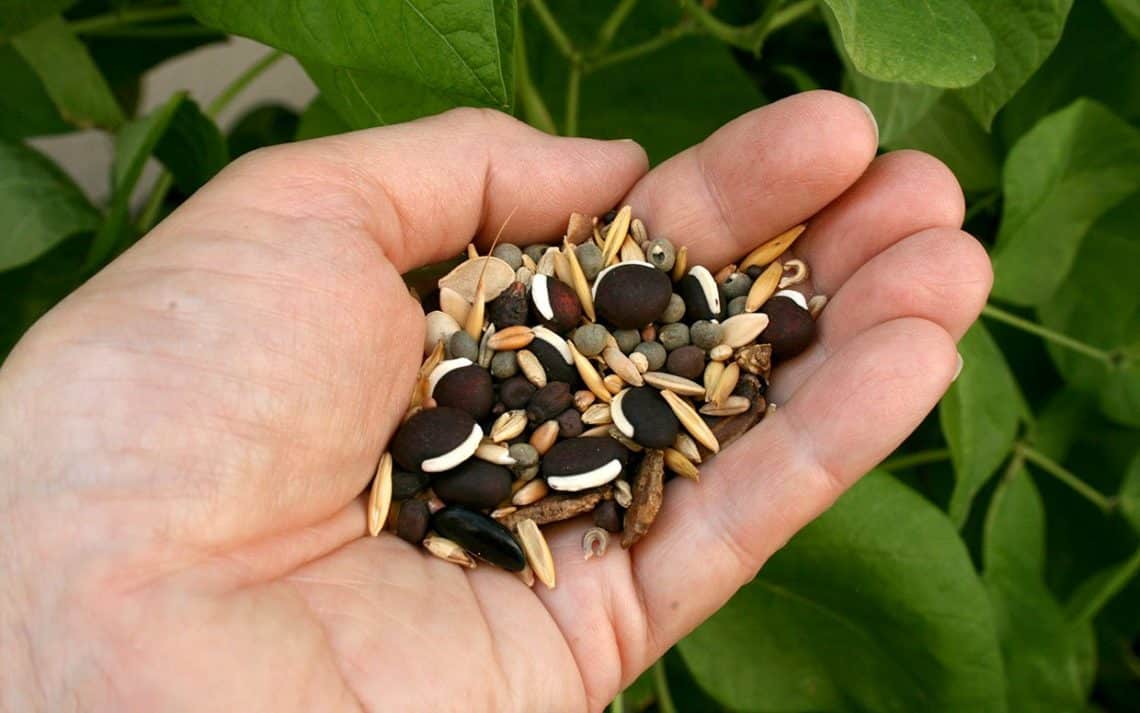Enraptured with veggies you grew this spring and summer and want to preserve the magic? Try saving seed from your favorites. When you save your own seed, you have a much better chance of repeating the same harvest next season. Saving seed allows you to create your own dependable crops for years to come.
Seed packets didn’t exist years ago. Our ancestors saved seed and passed it on from generation to generation. Today, organizations like Native Seeds/SEARCH and Seed Savers Exchange continue the tradition of saving heirloom seeds so that various plants don’t become extinct and can be preserved indefinitely, creating a living legacy.
You can also save seed if you keep a few tips in mind.
Before you start saving seed, it’s important that you understand the difference between hybrid and open-pollinated plants and their seed.
Hybridized plants are those that breeders have created by crossing two different plant parents. They do this to use desirable traits from each plant to create an even better plant. Don’t bother saving seed from such plants, though, as the results when you sprout the seed won’t be like the plant in your garden. The resulting plant may even look or taste odd. (I once saved the seed from a hybrid tomato and grew a tomato plant the following season. I ended up with a tomato plant bursting with yummy-looking fruit that actually tasted like I think used motor oil would.)
Only save seed from what are known as heirloom or open-pollinated plants, which produce seed that becomes viable when it is pollinated by insects or wind. Such seed, which is what organizations like those named above are saving, grow true to form every time.
Some indicators of hybrid plants are when they are labeled as F-1 or hybrid, either on the plant label or seed packet. If the seed description says that the plant is an heirloom, then there’s a good chance you have an open-pollinated variety that can be successfully saved.
Some veggies that tend to generally be heirloom include beans, lettuce and peppers. Almost all corn varieties are hybrid. Other veggies, like tomatoes, tend to come in both types.
Saving seed will vary according to the type of veggie or fruit, but there are a few constants to keep in mind.
Wait. In order for seed to be viable, it must be mature. That means it’s necessary to leave the seed in the veggie or fruit until it dries or rots on the vine. Wait until cucumbers are yellow and lightweight, squash is overgrown and yellowed and tomatoes are beginning to rot. Bean and pea pods should be brown and dry. For root crops like lettuce, parsley and carrots, wait until they flower above ground and their seed heads brown and dry.
Harvest. Once the veggie is ready, remove and dry the seeds. For plants like tomatoes, cucumbers and squash, cut out the seeds and separate them from their pulp by washing them clean with cold water. Pat the seeds dry and then lay them on paper towels to air dry at room temperature away from bright light. For seed grown in pods, like peas and beans, open the pods and pull out the seeds. To save small seed grown in seed heads, like lettuce, shake the heads into a paper sack.
Store. Once seed is completely dry, keep it viable by storing it away from moisture and heat. Place the seed in a labeled envelope and put it in a screw top jar in a cool, dry location, such as the back of a pantry. Use the seed the following season, if possible, as seed viability drops after a year.
Julie Bawden-Davis is a garden writer and master gardener, who since 1985 has written for publications such as Organic Gardening, The American Gardener, Wildflower, Better Homes and Gardens and The Los Angeles Times. She is the author of seven books, including Reader’s Digest Flower Gardening, Fairy Gardening, The Strawberry Story Series, and Indoor Gardening the Organic Way, and is the founder of HealthyHouseplants.com.

